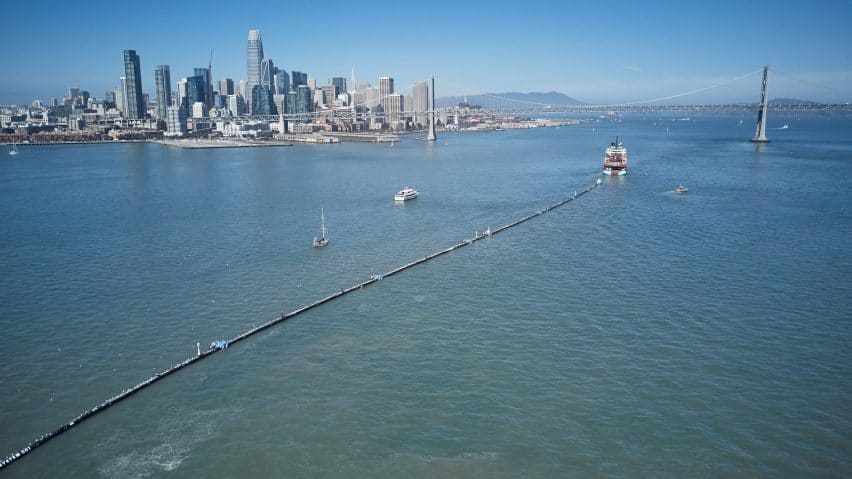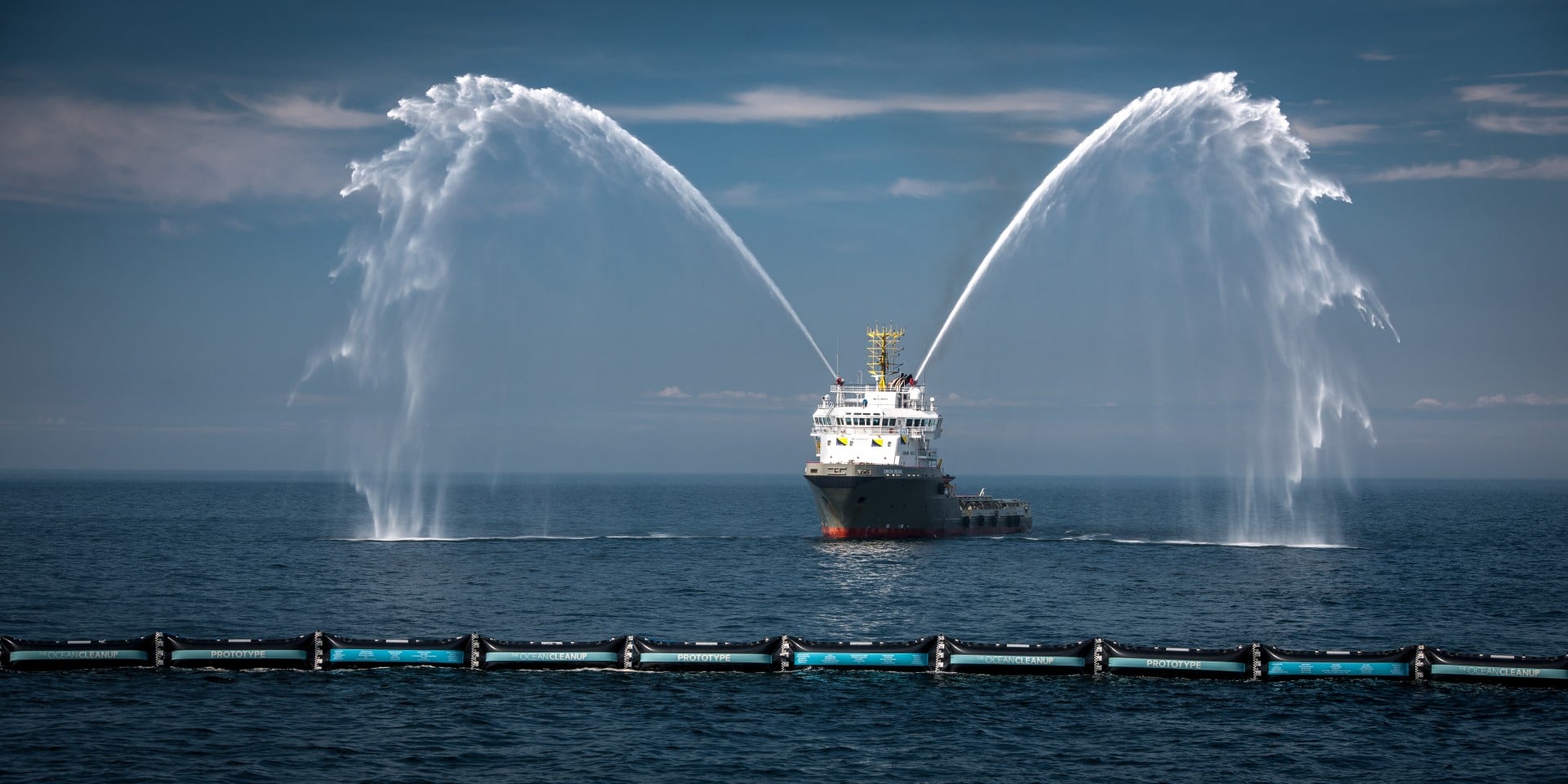Netherlands (Delft)
Around 8 million tonnes of plastic enter the ocean every year – killing over a million seabirds, hundreds of thousands of marine mammals and even entering the human food chain, affecting our health. Plastic pollution also costs at least US$13 billion each year to industries such as fishing, shipping and tourism, and for the cleaning of coastlines.
Boyan Slat plans to clean up the world’s oceans with a “giant Pac-Man” that will remove over seven million tons of plastic. Boyan Slat’s invention is an anchored network of floating booms and processing platforms, which will be located where plastic accumulates. Working with the flow of ocean currents, the array acts as a giant funnel. The angle of the booms force plastic in the direction of the processing platforms, where it would be separated from smaller forms, such as plankton. Here it will be filtered and stored for recycling.

By using booms instead of nets, the issue of by-catches – catching and killing marine creatures in the process – can be virtually eliminated. Because of the density of plastic in comparison to larger sea animals, the booms will allow creatures to swim under them unaffected, reducing wildlife death substantially. Slat and his team deployed the system in San Francisco Bay in September 2018.
“This marks the first time that free floating plastic have been successfully collected at sea,” Boyan explains. “For 60 years, mankind has been putting plastic into the oceans; from that day onwards, we’re taking it back out again.”
His aim is to send up to 60 more to the Great Pacific Garbage Patch over the next years. Some experts are arguing that the massive – and controversial – plastic-cleaning system clean-up system won’t work and will do more harm than good. Obviously the best solution might be stopping plastic before it gets into the water.
“In the past, technological advances have often come with a cost to the environment,” he tells us. “What I really hope is that in this century, The Ocean Cleanup can be used as a symbol for us using technology to actually make things better.”
AtlasAction: Follow the Ocean Cleanup updates.
Bio
Gaby is a wildlife documentary producer with broadcast credits on BBC, National Geographic, Discovery and PBS.
Project leader
Boyan Slat, Founder and CEO
Support the Atlas
We want the Atlas of the Future media platform and our event to be available to everybody, everywhere for free – always. Fancy helping us spread stories of hope and optimism to create a better tomorrow? For those able, we'd be grateful for any donation.
- Please support the Atlas here
- Thank you!





